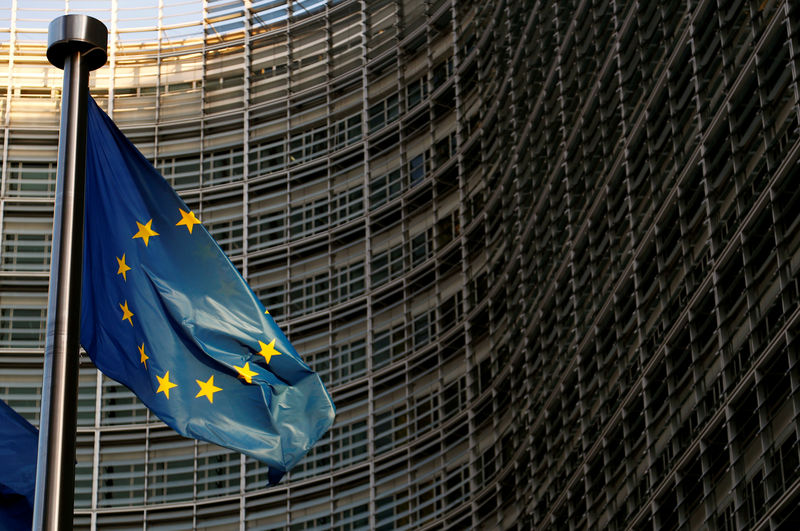 © Reuters. A EU flag is seen outside the EU Commission headquarters in Brussels
© Reuters. A EU flag is seen outside the EU Commission headquarters in BrusselsBy Francesco Guarascio
BRUSSELS (Reuters) – The European Union is failing to stem misuse of EU funds worth hundreds of millions of euros each year, and manages to recoup only about 15 percent of this sum, auditors said on Thursday.
Fraudulent use of EU funds amounted to 391 million euros($451 million) in 2017, fairly typical of the last four years.
But the judicial findings of the EU anti-fraud investigative office, OLAF, only led to actual indictments in EU member states in 45 percent of cases, the Court of EU auditors said in a report.
Between 2012 and 2016, only about 15 percent of the total volume of uncovered fraud was actually recovered.
Although the uncovered scams are small compared to the annual EU budget of around 140 billion euros ($160 billion), the auditors said fraud was probably substantially under-reported as the mechanism for sharing information with EU states was so clumsy.
EU funds mostly go to farmers and projects in poorer regions of the 28-country bloc.
In some cases, OLAF found EU funds were being misused by national politicians or their families or associates – a problem when it is national authorities who are responsible for prosecuting fraud.
The auditors urged the Commission to give OLAF more powers.
The Commission said it was committed to fighting fraud more effectively and acknowledged the “long-standing challenge” of following-up OLAF’s findings at national level.
The auditors welcomed a decision to establish a European Prosecutor’s Office to conduct investigations on EU spending from 2021, but said a lack of staff and funding meant it might have to rely excessively on national authorities.
The new body will anyway not have jurisdiction over Hungary, Poland, Ireland, Sweden, Britain or Denmark, which opted out.
Fusion Media or anyone involved with Fusion Media will not accept any liability for loss or damage as a result of reliance on the information including data, quotes, charts and buy/sell signals contained within this website. Please be fully informed regarding the risks and costs associated with trading the financial markets, it is one of the riskiest investment forms possible.
Source: Investing.com





























